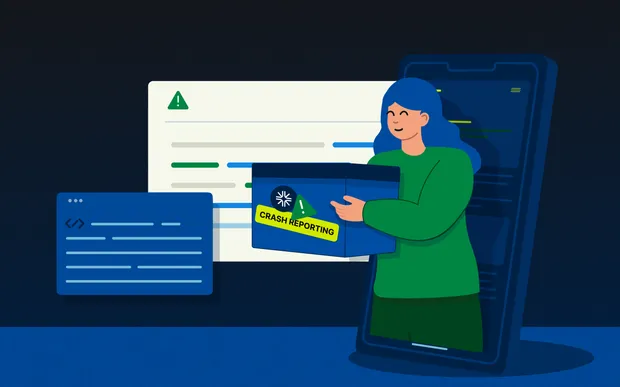Rosalind Lutsky

For years, crash reporting tools have been synonymous with observability for mobile teams. But the dirty secret is that crashes alone have always been fragments of the truth.
You get a stack trace. Maybe a few breadcrumbs. Then you’re left piecing together what really happened with a string of “can you repro?” Slack threads.
On top of that, crash reporting tools zero in on brief (and rare!) moments in time - looking at the ~0.01% of your overall sessions that are actually crashing. The majority of tools on the market stop short of giving you real user data on the other 99.99% of sessions - many of which involve errors that are equally, if not more, frustrating and disruptive to your users.
We built bitdrift to kill this cycle and to shed light on the other 99.99% of sessions.
And today, we’re making it official: crash reporting on bitdrift is now generally available… and completely free as part of our new free tier offering. Just plug in our SDK, start capturing crashes, and get context-rich views into your issues, complete with logs, traces, and session replays.
Building off of our initial beta release of crash reporting, we’ve added a host of new features, including:
- NDK (native crashes) support on Android
- App hang detection on iOS
From fragments to full context
Legacy crash tools show you how your app crashed. bitdrift shows you why. Our on-device ring buffer captures logs, events, and telemetry from before, during, and after a crash. Instead of a single stack trace, you get the full story: what the user did, what the app was doing, how the device was performing, and what led to the issue. You can literally rewind time to see the sequence of events that caused the issue - like your favorite VHS tape for app crashes.Why make crash reporting free?
So why did we decide to give this away for free? We believe that basic crash reporting alone shouldn’t cost anything. The truth is, crash reporting has been a cash cow for a lot of legacy vendors, but those tools stop short of true observability and put the burden on users to pay for partial visibility because the industry is obsessed with having a “good” crash rate. We think that’s backwards. Visibility into how and why your app breaks should be a baseline, not a luxury. Tools like Firebase help fill that gap, but don’t go far enough to give you truly helpful context. With this release, we’re giving teams crash reporting for free, using the same production-grade telemetry engine that powers our full Capture platform. This isn’t a limited-time trial or a marketing gimmick. It’s a new foundation for modern observability, one that starts with context, not crumbs.What’s included in the free plan?
We designed our free tier to give you everything you need to track and debug crashes. While we know this plan won’t work long term for growing teams, we wanted it to be genuinely valuable for individuals and small teams who don’t want to blow their whole observability budget on crash reporting. Along with crash reporting on 100% of your devices, the free tier also includes a basic version of our full mobile observability platform, Capture, for up to 50K monthly active devices. As we said above, crash reporting is a tiny piece of the overall puzzle, and we want teams to also have access to true observability on a limited scale. And if you outgrow it? The same awesome crash reporting solution is included free with an Enterprise plan: adding unlimited users and devices, configurable data retention, session replay, advanced integrations, spans, our workflow debugger, and many more features that make Capture the best mobile observability tool on the market.Why this matters
This launch isn’t just about giving a version of crash reporting away for free. It’s about changing expectations. Every developer deserves to see what really happened in their app, not just the aftermath. And it’s already transforming how teams work. The QA team at Hatch put it best:bitdrift’s Issues feature has become an essential tool for our QA team. We use it to troubleshoot crashes and produce our weekly app regression reports with ease. The ability to filter by build number, time frame, or platform—and to quickly find crashes by user ID—combined with its intuitive interface, makes the entire process seamless.That’s exactly the kind of workflow we designed bitdrift for: no friction, no guesswork, just fast, context-rich answers that make debugging feel effortless. By offering crash reporting alongside our robust real-time mobile observability platform, Capture, we’re making bitdrift the easiest way to get started with true, context-rich mobile insights. So go ahead, ditch your expensive bill, rewind the tapes, and kill the endless repro threads. Get started today.